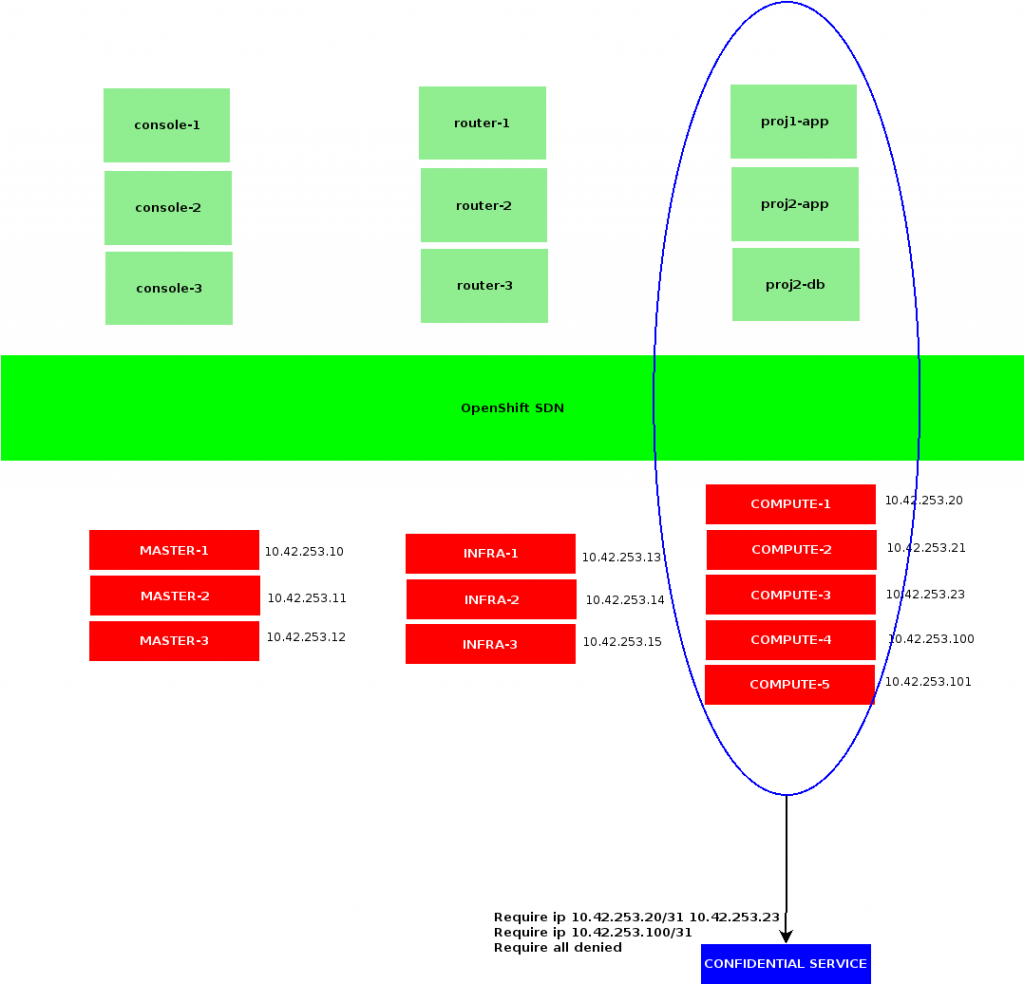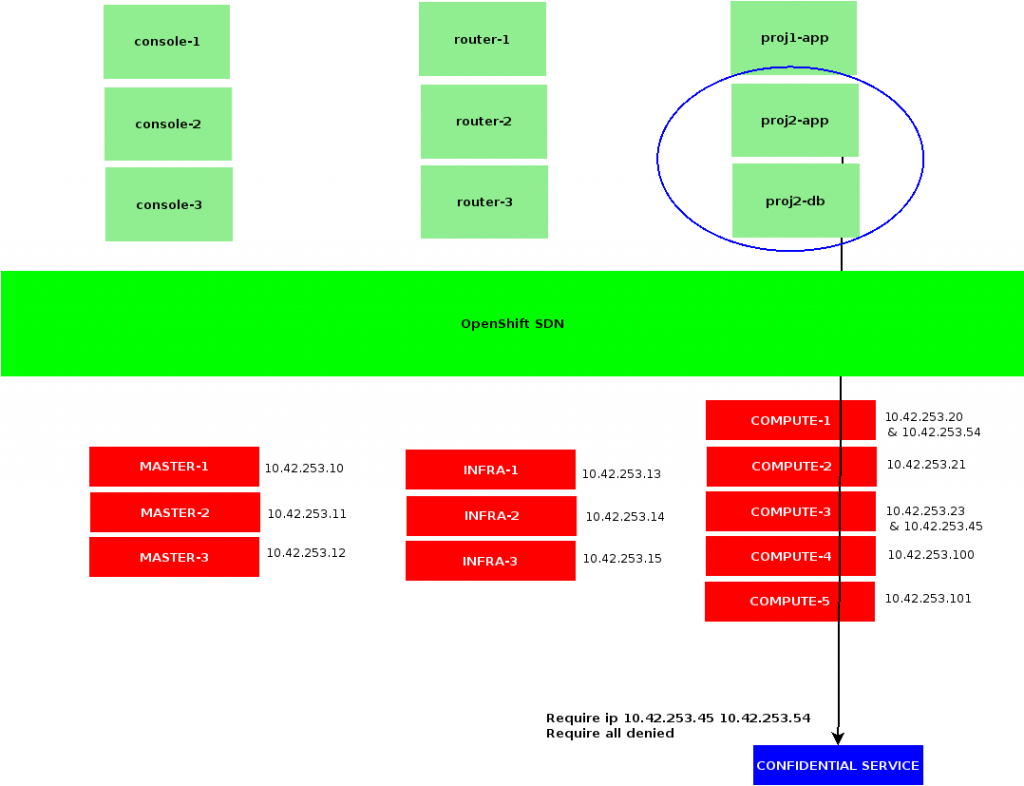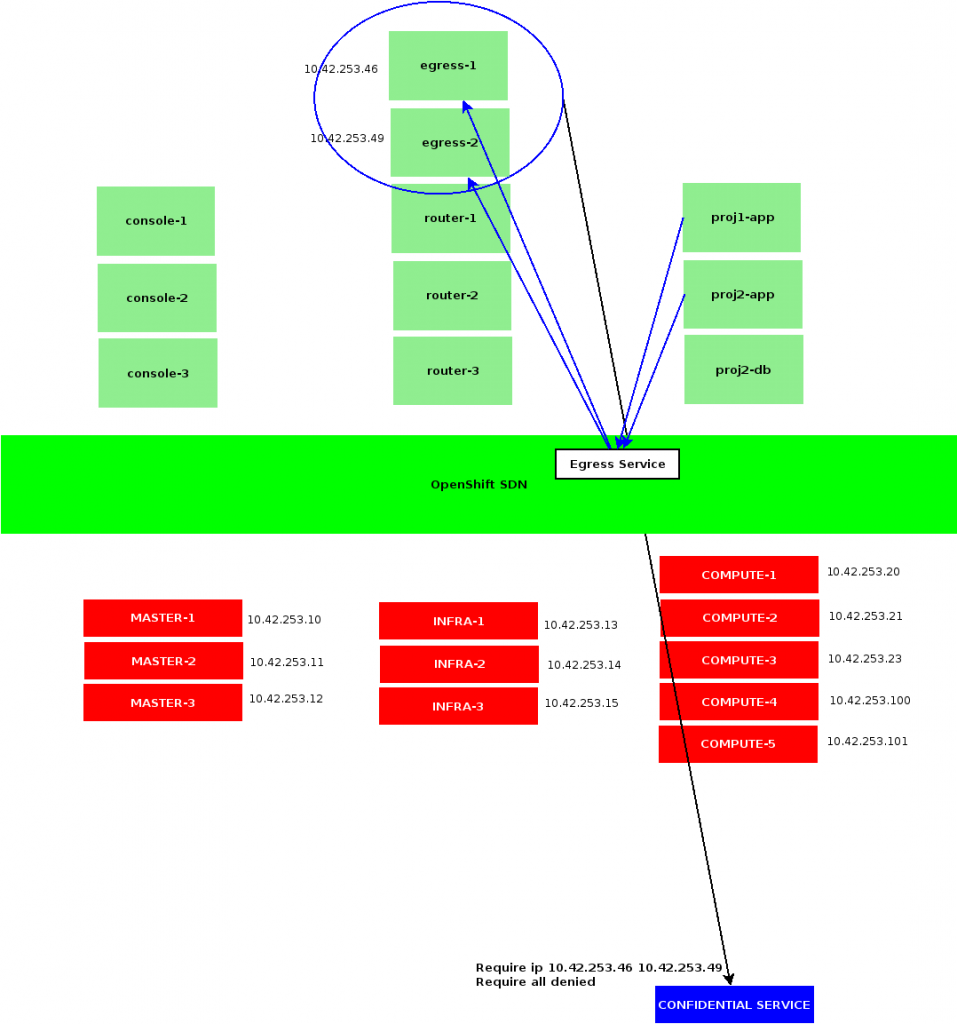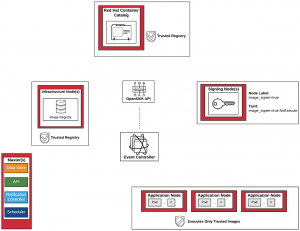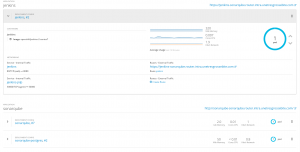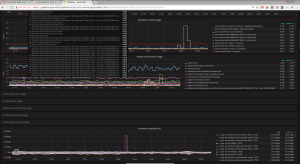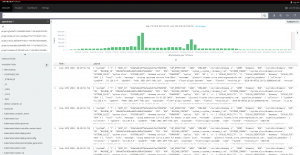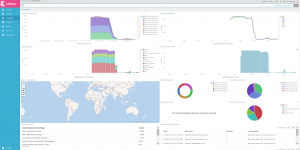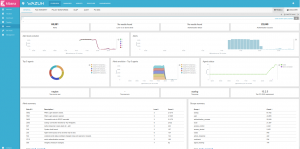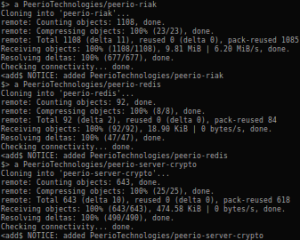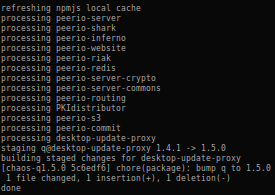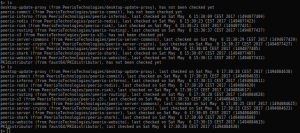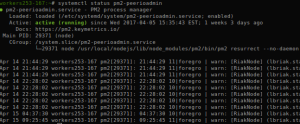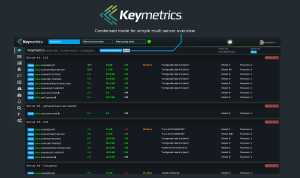Deploying Kubernetes with KubeSpray
I should first admit OpenShift 4 is slowly recovering from its architectural do-over. I’m still missing something that would be production ready, and quite disappointed by the waste of resources, violent upgrades, broken CSI, somewhat unstable RH-CoreOS, a complicated deployment scheme when dealing with bare-metal, … among lesser critical bugs.
OpenShift 3 is still an interesting platform hosting production workloads, although its being based on Kubernetes 1.11 makes it quite an old version already.
After some experimentation on a Raspberry-Pi lab, I figured I would give Kubernetes a try on x86. Doing so, I would be looking at KubeSpray.
If you’re familiar with OpenShift 3 cluster deployments, you may have been using openshift-ansible already. Kube-spray is a similar solution, focused on Kubernetes, simplifying the process of bootstrapping, scaling and upgrading highly available clusters.
Currently, kube-spray allows for deploying Kubernetes with container runtimes such as docker, cri-o, containerd, SDN based on flannel, weave, calico, … as well as a registry, some nginx based ingress controller, certs manager controller, integrated metrics, or the localvolumes, rbd and cephfs provisioner plugins.
Comparing with OpenShift 4, the main missing components would be the cluster and developer consoles, RBAC integrating with users and groups from some third-party authentication provider. Arguably, the OLM, though I never really liked that one — makes your operators deployment quite abstract, and complicated to troubleshoot, as it involves several namespaces and containers, … The Prometheus Operator, that could still be deployed manually.
I can confirm everything works perfectly deploying on Debian Buster nodes, with containerd and calico. Keeping pretty much all defaults in place and activating all addons.
The sample variables shipping with kube-spray are pretty much on point. We would create an inventory file, such as the following:
all:
hosts:
master1:
access_ip: 10.42.253.10
ansible_host: 10.42.253.10
ip: 10.42.253.10
node_labels:
infra.utgb/zone: momos-adm
master2:
access_ip: 10.42.253.11
ansible_host: 10.42.253.11
ip: 10.42.253.11
node_labels:
infra.utgb/zone: thaoatmos-adm
master3:
access_ip: 10.42.253.12
ansible_host: 10.42.253.12
ip: 10.42.253.12
node_labels:
infra.utgb/zone: moros-adm
infra1:
access_ip: 10.42.253.13
ansible_host: 10.42.253.13
ip: 10.42.253.13
node_labels:
node-role.kubernetes.io/infra: “true”
infra.utgb/zone: momos-adm
infra2:
access_ip: 10.42.253.14
ansible_host: 10.42.253.14
ip: 10.42.253.14
node_labels:
node-role.kubernetes.io/infra: “true”
infra.utgb/zone: thanatos-adm
infra3:
access_ip: 10.42.253.15
ansible_host: 10.42.253.15
ip: 10.42.253.15
node_labels:
node-role.kubernetes.io/infra: “true”
infra.utgb/zone: moros-adm
compute1:
access_ip: 10.42.253.20
ansible_host: 10.42.253.20
ip: 10.42.253.20
node_labels:
node-role.kubernetes.io/worker: “true”
infra.utgb/zone: momos-adm
compute2:
access_ip: 10.42.253.21
ansible_host: 10.42.253.21
ip: 10.42.253.21
node_labels:
node-role.kubernetes.io/worker: “true”
infra.utgb/zone: moros-adm
compute3:
access_ip: 10.42.253.22
ansible_host: 10.42.253.22
ip: 10.42.253.22
node_labels:
node-role.kubernetes.io/worker: “true”
infra.utgb/zone: momos-adm
compute4:
access_ip: 10.42.253.23
ansible_host: 10.42.253.23
ip: 10.42.253.23
node_labels:
node-role.kubernetes.io/worker: “true”
infra.utgb/zone: moros-adm
children:
kube-master:
hosts:
master1:
master2:
master3:
kube-infra:
hosts:
infra1:
infra2:
infra3:
kube-worker:
hosts:
compute1:
compute2:
compute3:
compute4:
kube-node:
children:
kube-master:
kube-infra:
kube-worker:
etcd:
hosts:
master1:
master2:
master3:
k8s-cluster:
children:
kube-master:
kube-node:
calico-rr:
hosts: {}
Then, we’ll edit the sample group_vars/etcd.yml:
etcd_compaction_retention: “8”
etcd_metrics: basic
etcd_memory_limit: 5GB
etcd_quota_backend_bytes: 2147483648
# ^ WARNING: sample var tells about “2G”
# which results in etcd not starting (deployment_type=host)
# journalctl shows errors such as:
# > invalid value “2G” for ETCD_QUOTA_BACKEND_BYTES: strconv.ParseInt: parsing “2G”: invalid syntax
# Also note: here, I’m setting 20G, not 2.
etcd_deployment_type: host
Next, common variables in group_vars/all/all.yml:
etcd_data_dir: /var/lib/etcd
bin_dir: /usr/local/bin
kubelet_load_modules: true
upstream_dns_servers:
– 10.255.255.255
searchdomains:
– intra.unetresgrossebite.com
– unetresgrossebite.com
additional_no_proxy: “*.intra.unetresgrossebite.com,10.42.0.0/15”
http_proxy: “http://netserv.vms.intra.unetresgrossebite.com:3128/”
https_proxy: “{{ http_proxy }}”
download_validate_certs: False
cert_management: script
download_container: true
deploy_container_engine: true
apiserver_loadbalancer_domain_name: api-k8s.intra.unetresgrossebite.com
loadbalancer_apiserver:
address: 10.42.253.152
port: 6443
loadbalancer_apiserver_localhost: false
loadbalancer_apiserver_port: 6443
We would also want to customize the variables in group_vars/k8s-cluster/k8s-cluster.yml:
kube_config_dir: /etc/kubernetes
kube_script_dir: “{{ bin_dir }}/kubernetes-scripts”
kube_manifest_dir: “{{ kube_config_dir }}/manifests”
kube_cert_dir: “{{ kube_config_dir }}/ssl”
kube_token_dir: “{{ kube_config_dir }}/tokens”
kube_users_dir: “{{ kube_config_dir }}/users”
kube_api_anonymous_auth: true
kube_version: v1.18.3
kube_image_repo: “k8s.gcr.io”
local_release_dir: “/tmp/releases”
retry_stagger: 5
kube_cert_group: kube-cert
kube_log_level: 2
credentials_dir: “{{ inventory_dir }}/credentials”
kube_api_pwd: “{{ lookup(‘password’, credentials_dir + ‘/kube_user.creds length=15 chars=ascii_letters,digits’) }}”
kube_users:
kube:
pass: “{{ kube_api_pwd }}”
role: admin
groups:
– system:masters
kube_oidc_auth: false
kube_basic_auth: true
kube_token_auth: true
kube_network_plugin: calico
kube_network_plugin_multus: false
kube_service_addresses: 10.233.0.0/18
kube_pods_subnet: 10.233.64.0/18
kube_network_node_prefix: 24
kube_apiserver_ip: “{{ kube_service_addresses|ipaddr(‘net’)|ipaddr(1)|ipaddr(‘address’) }}”
kube_apiserver_port: 6443
kube_apiserver_insecure_port: 0
kube_proxy_mode: ipvs
# using metallb, set to true
kube_proxy_strict_arp: false
kube_proxy_nodeport_addresses: []
kube_encrypt_secret_data: false
cluster_name: cluster.local
ndots: 2
kubeconfig_localhost: true
kubectl_localhost: true
dns_mode: coredns
enable_nodelocaldns: true
nodelocaldns_ip: 169.254.25.10
nodelocaldns_health_port: 9254
enable_coredns_k8s_external: false
coredns_k8s_external_zone: k8s_external.local
enable_coredns_k8s_endpoint_pod_names: false
system_reserved: true
system_memory_reserved: 512M
system_cpu_reserved: 500m
system_master_memory_reserved: 256M
system_master_cpu_reserved: 250m
deploy_netchecker: false
skydns_server: “{{ kube_service_addresses|ipaddr(‘net’)|ipaddr(3)|ipaddr(‘address’) }}”
skydns_server_secondary: “{{ kube_service_addresses|ipaddr(‘net’)|ipaddr(4)|ipaddr(‘address’) }}”
dns_domain: “{{ cluster_name }}”
kubelet_deployment_type: host
helm_deployment_type: host
kubeadm_control_plane: false
kubeadm_certificate_key: “{{ lookup(‘password’, credentials_dir + ‘/kubeadm_certificate_key.creds length=64 chars=hexdigits’) | lower }}”
k8s_image_pull_policy: IfNotPresent
kubernetes_audit: false
dynamic_kubelet_configuration: false
default_kubelet_config_dir: “{{ kube_config_dir }}/dynamic_kubelet_dir”
dynamic_kubelet_configuration_dir: “{{ kubelet_config_dir | default(default_kubelet_config_dir) }}”
authorization_modes:
– Node
– RBAC
podsecuritypolicy_enabled: true
container_manager: containerd
resolvconf_mode: none
etcd_deployment_type: host
Finally, we may enable additional components in group_vars/k8s-cluster/addons.yml:
dashboard_enabled: true
helm_enabled: falseregistry_enabled: false
registry_namespace: kube-system
registry_storage_class: rwx-storage
registry_disk_size: 500Gimetrics_server_enabled: true
metrics_server_kubelet_insecure_tls: true
metrics_server_metric_resolution: 60s
metrics_server_kubelet_preferred_address_types: InternalIPcephfs_provisioner_enabled: true
cephfs_provisioner_namespace: cephfs-provisioner
cephfs_provisioner_cluster: ceph
cephfs_provisioner_monitors: “10.42.253.110:6789,10.42.253.111:6789,10.42.253.112:6789”
cephfs_provisioner_admin_id: admin
cephfs_provisioner_secret: key returned by ‘ceph auth get client.admin’
cephfs_provisioner_storage_class: rwx-storage
cephfs_provisioner_reclaim_policy: Delete
cephfs_provisioner_claim_root: /volumes
cephfs_provisioner_deterministic_names: truerbd_provisioner_enabled: true
rbd_provisioner_namespace: rbd-provisioner
rbd_provisioner_replicas: 2
rbd_provisioner_monitors: “10.42.253.110:6789,10.42.253.111:6789,10.42.253.112:6789”
rbd_provisioner_pool: kube
rbd_provisioner_admin_id: admin
rbd_provisioner_secret_name: ceph-secret-admin
rbd_provisioner_secret: key retured by ‘ceph auth get client.admin’
rbd_provisioner_user_id: kube
rbd_provisioner_user_secret_name: ceph-secret-user
rbd_provisioner_user_secret: key returned by ‘ceph auth gt client.kube’
rbd_provisioner_user_secret_namespace: “{{ rbd_provisioner_namespace }}”
rbd_provisioner_fs_type: ext4
rbd_provisioner_image_format: “2”
rbd_provisioner_image_features: layering
rbd_provisioner_storage_class: rwo-storage
rbd_provisioner_reclaim_policy: Deleteingress_nginx_enabled: true
ingress_nginx_host_network: true
ingress_publish_status_address: “”
ingress_nginx_nodeselector:
node-role.kubernetes.io/infra: “true”
ingress_nginx_namespace: ingress-nginx
ingress_nginx_insecure_port: 80
ingress_nginx_secure_port: 443
ingress_nginx_configmap:
map-hash-bucket-size: “512”cert_manager_enabled: true
cert_manager_namespace: cert-manager
We now have pretty much everything ready. Last, we would deploy some haproxy node, proxying requests to Kubernetes API. To do so, I would use a pair of VMs, with keepalived and haproxy. On both, install necessary packages and configuration:
apt-get update ; apt-get install keepalived haproxy hatop
cat << EOF>/etc/keepalived/keepalived.conf
global_defs {
notification_email {
contact@example.com
}
notification_email_from keepalive@$(hostname -f)
smtp_server smtp.example.com
smtp_connect_timeout 30
}vrrp_instance VI_1 {
state MASTER
interface ens3
virtual_router_id 101
priority 10
advert_int 101
authentication {
auth_type PASS
auth_pass your_secret
}
virtual_ipaddress {
10.42.253.152
}
}
EOF
echo net.ipv4.conf.all.forwarding=1 >>/etc/sysctl.conf
sysctl -w net.ipv4.conf.all.forwarding=1
systemctl restart keepalived && systemctl enable keepalived
#hint: use distinct priorities on nodes
cat << EOF>/etc/haproxy/haproxy.cfg
global
log /dev/log local0
log /dev/log local1 notice
chroot /var/lib/haproxy
stats socket /run/haproxy/admin.sock mode 660 level admin expose-fd listeners
stats timeout 30s
user haproxy
group haproxy
daemon
ca-base /etc/ssl/certs
crt-base /etc/ssl/private
ssl-default-bind-ciphers ECDH+AESGCM:DH+AESGCM:ECDH+AES256:DH+AES256:ECDH+AES128:DH+AES:RSA+AESGCM:RSA+AES:!aNULL:!MD5:!DSS
ssl-default-bind-options no-sslv3defaults
log global
option dontlognull
timeout connect 5000
timeout client 50000
timeout server 50000
errorfile 400 /etc/haproxy/errors/400.http
errorfile 403 /etc/haproxy/errors/403.http
errorfile 408 /etc/haproxy/errors/408.http
errorfile 500 /etc/haproxy/errors/500.http
errorfile 502 /etc/haproxy/errors/502.http
errorfile 503 /etc/haproxy/errors/503.http
errorfile 504 /etc/haproxy/errors/504.httplisten kubernetes-apiserver-https
bind 0.0.0.0:6443
mode tcp
option log-health-checks
server master1 10.42.253.10:6443 check check-ssl verify none inter 10s
server master2 10.42.253.11:6443 check check-ssl verify none inter 10s
server master3 10.42.253.12:6443 check check-ssl verify none inter 10s
balance roundrobin
EOF
systemctl restart haproxy && systemctl enable haproxy
cat << EOF>/etc/profile.d/hatop.sh
alias hatop=’hatop -s /run/haproxy/admin.sock’
EOF
We may now deploy our cluster:
ansible -i path/to/inventory cluster.yml
For a 10 nodes cluster, it shouldn’t take more than an hour.
It is quite nice, to see you can have some reliable Kubernetes deployment, with less than 60 infra Pods.
I’m also noticing that while the CSI provisioner is being used, creating Ceph RBD and CephFS volumes: the host is still in charge of mounting our those volumes – which is, in a way, a workaround to the CSI attacher plugins.
Although, on that note, I’ve heard those issues with blocked volumes during nodes failures was in its way to being solved, involving a fix to the CSI spec.
Sooner or later, we should be able to use the full CSI stack.
All in all, kube-spray is quite a satisfying solution.
Having struggled quite a lot with openshift-ansible, and not quite yet satisfied with their lasts installer, kube-spray definitely feels like some reliable piece of software, code is well organized, it goes straight to the point, …
Besides, I need a break from CentOS. I’m amazed I did not try it earlier.

